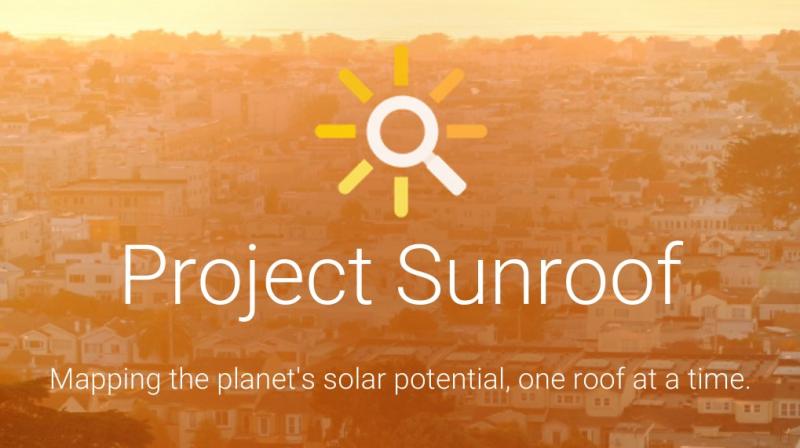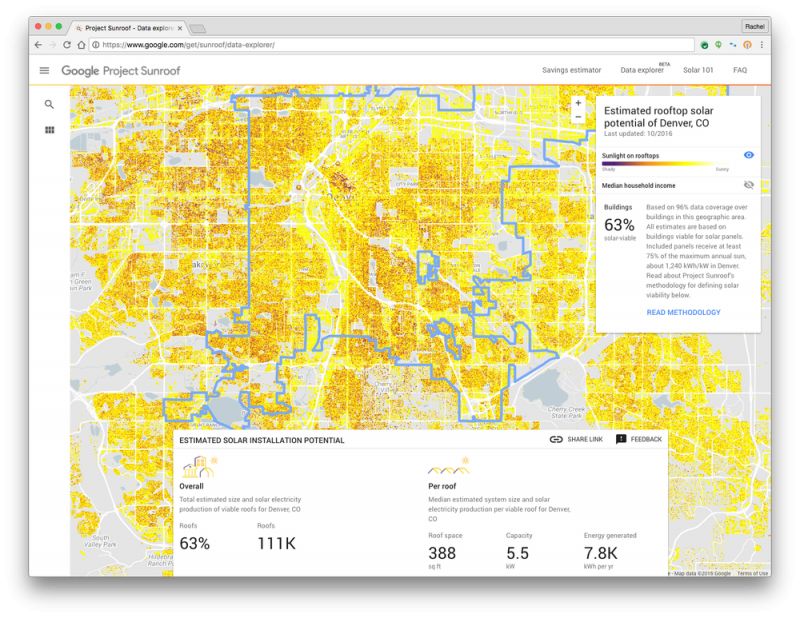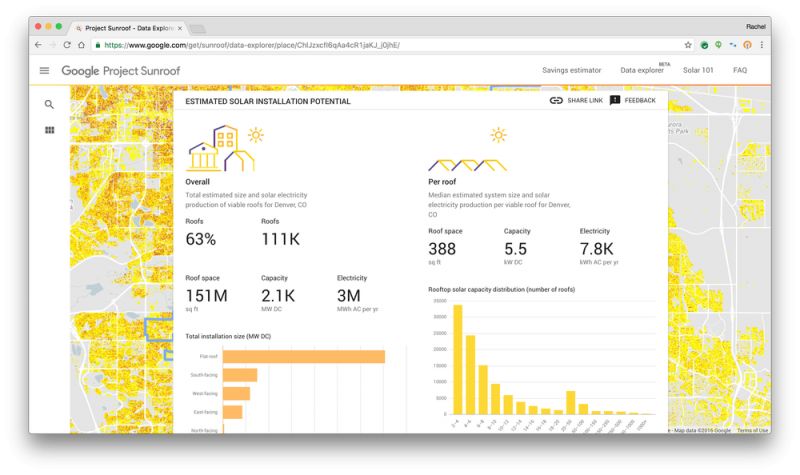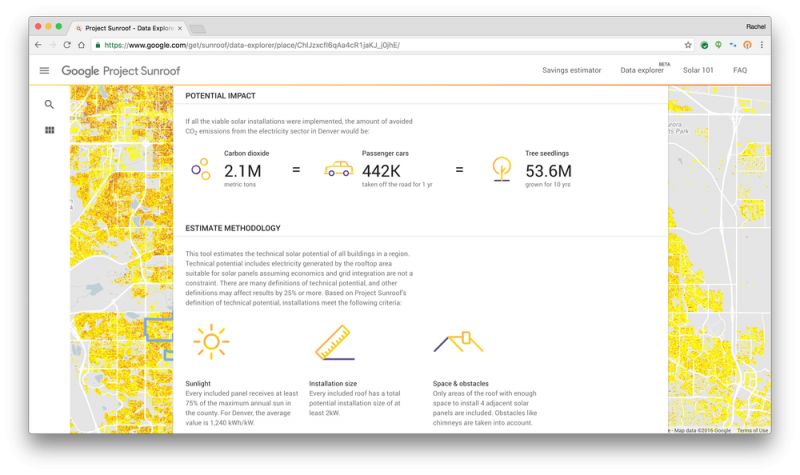Project Sunroof: Solar energy sustainability with Google

Clean energy has always been a proponent of sustainable energy, but the means to tap efficient utilization has always been a lingering question for manufacturers. Solar energy is one such form of clean energy. No residue, no harmful gases, just pure clean energy to use. One can however say that solar energy is largely untapped in domain of it being ideally utilized.
Project Sunroof, one such initiative from Google, has been helping homeowners explore whether they should go solar — offering solar estimates for over 43 million houses across 42 states. Solar installations today are growing rapidly, but there is a large amount of untapped potential which lies in the usage of solar power.
Google launches Project Sunroof, a new data explorer tool, which helps provide solar estimates with its data analytics by leveraging 3D rooftop geometry from Google Earth. This tool helps in distinguishing the solar potential of the millions of rooftops in a city, state, or country.
The tool now assists communities, cities, and municipalities to easily visualise how many rooftops are suitable for solar installations, how much power they could collectively generate, as well as how much carbon would be displaced by deploying rooftop solar at scale. Sunroof’s solar potential reports can also be shared among the community members, researchers, and policy-makers directly from the tool itself.
Rooftop solar is a viable option for the creation of sustainable energy deliverance into the society, which has been steadily increasing its carbon footprint through the use of fossil fuels day-by-day. The Indian Government has implemented the Jawaharlal Nehru National Solar Mission set with an ambitious target of deploying 20,000MW of grid connected solar power by 2022. This move is largely aimed at reducing the cost incurred for solar power generation in the country. The basic objectives are long term policy, large scale deployment goals, aggressive R&D, and most important of all — domestic production of critical raw materials, components and products, so as to achieve grid tariff parity by 2022. The JNN Mission is working towards enabling policy framework so as to achieve this objective and put India on the global map as leaders in the production of solar energy.
Rooftop solar is now becoming a viable option for many cities today. Sunroof’s data explorer is presently working only on the American subcontinent. The data explorer tool has found that over 90 per cent of the rooftops nationwide are viable for solar. This project has started its reach across cities such as Denver and organisations such as League of Cities, which see a great value in using the data explorer tool to evaluate whether solar can drive economic savings and growth, as well as help transition energy consumption to lower carbon sources for their communities.
Program Director of Sustainable Cities Institute, Cooper Martin, states, “Our Sustainable Cities Institute program aims to provide guidance and information for governments that want to pursue sustainability and ensuring that solar is easy, fast, and cheap to install. Sunroof’s Data Explorer tool can help inform city stakeholders about the opportunity of solar energy, and the work that is needed to support solar-friendly policies.”
Mark Trout, CIO of Vivint, “In previous analysis we’ve done, comparing Project Sunroof data estimates to actual systems performing in the field, we’ve found Google’s information to be highly accurate source for predicting the solar performance of a rooftop system. At Vivint Solar we are constantly focusing on how to better delight our customers and advance the solar industry through leading innovation. Project Sunroof is a prime example how technology can improve the consumer experience and accelerate solar deployment here in the US.”
Looking at the bigger picture, the release of the data explorer tool has marked another milestone across the Project Sunroof initiative. The use of Google’s high quality information has the potential to cumulatively accelerate the growth of solar. This can be done by encompassing public imagination, and assisting communities make smarter decisions in their transition to cleaner power sources, reduce carbon footprint and reap the economies of scale.




